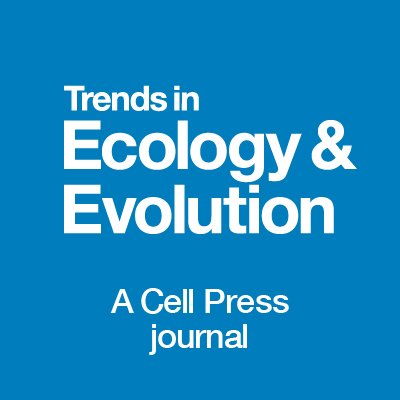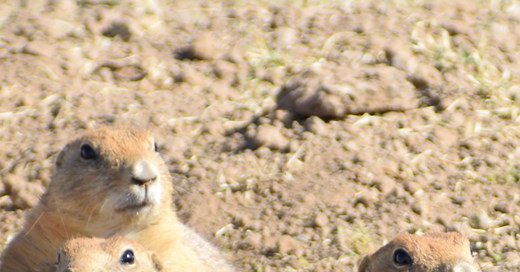
Kristy Ferraro 🦌👩🏻🔬 & 📚🐛
@KristyFerraro
Followers
581
Following
8K
Media
167
Statuses
2K
Banting postdoc @MemorialU, PhD @yaleenvironment | #caribou & other #deer zoogeochem | conservation ethics | she/her | #dyslexic misspelled tweets mine
Yale University
Joined October 2011
The bottom line: zoogeochemical niche construction offers a way to understand how animals, through their elemental legacies, can influence not just ecosystems—but their own evolutionary trajectories.
0
0
2
We outline experimental, correlative, and comparative approaches to identify and test these dynamics, providing ecologists with tools to discover new eco-evolutionary feedbacks and revisit old hypotheses about animal movement and behavior.
1
0
2
Our contribution: the Zoogeochemical Niche Construction Framework. We link animal-driven changes in elemental cycles to nutritional ecology, fitness, and ultimately evolutionary processes.
1
0
2
But here’s the catch: despite both focusing on feedbacks between organisms and environments, niche construction and zoogeochemistry have mostly developed in isolation. This means we know little about the evolutionary consequences of animal-driven nutrient cycling.
1
0
2
Meanwhile, zoogeochemistry has shown that animals are powerful drivers of element redistribution and cycling. Think salmon carrying marine nutrients into forests or seabirds fertilizing islands.
1
0
2
Niche construction theory tells us that organisms can influence their own evolution by modifying their habitats. Classic examples include earthworms changing soil structure or beavers building dams.
1
0
2
Animals don’t just live in their environments—they transform them. And in doing so, they may also shape their own evolutionary trajectories. Our new paper in Trends in Ecology & Evolution introduces a framework for zoogeochemical niche construction. A thread 👇
Online now: Zoogeochemical niche construction: how animal-mediated biogeochemistry affects evolution https://t.co/dq5xE90Ald
1
4
12
Stories and science, oh my! Thanks @AIBSbiology for hosting @GAdamMeyer and I to chat about our new paper in BioScience! We talk about narratives in science and provide tools for creative storytelling in ecology and conservation. Have a listen!
0
1
1
We show that while this problem is everywhere, there are ways forward that let science writers be more honest, creative, and true to the complexity of the natural world. If you like storytelling, or easter eggs of novels and movies in science writing, give our paper a read!
0
0
1
One of my favorites? The "will they, won't they" arc—perfect for Jane Austen's critiques of the English gentry AND for ecological phenomena like partial migration, where animals linger in uncertainty. It's messy, dynamic, and far more true to life.
1
0
1
We think there are better ways to tell ecological stories. Borrowing narrative tools from our favorite books and films, we suggest alternatives that work well in science writing, like character studies, reckoning with the past, or the inconvenient prophecy.
1
0
1
And the hero–villain trope shows up everywhere in ecology and conservation writing! It's in our paper titles, the words we choose, the narrative tension built in our introductions, and even in presentations. This is a problem.
1
0
1
The issue is that the hero–villain trope assigns moral blame. In ecology and conservation, so-called villains are often animals or processes that aren’t morally accountable. This framing also flattens complexity, bakes in hidden values, and risks misleading readers.
1
0
1
Josh Schimmel taught us that good science storytelling casts variables as characters. We agree! Using characters helps bring ideas to life. But casting variables in a simple hero–villain narrative is dangerous for the uncareful writer, particularly in ecology and conservation.
1
0
1
We often lean on heroes and villains to make sense of the world—but nature rarely fits that mold. Our paper in @AIBSbiology looks at the hero-villain trope in ecology & conservation, and offers ways to tell richer, more honest stories. @GAdamMeyer
https://t.co/YJ29cU8d6M
academic.oup.com
Abstract. Storytelling is an essential part of science writing. To craft compelling stories, scientists are taught to think of their variables as character
1
1
4
I’m absolutely honored to win a prize named after such a bold advocate for wildlife. Thank you @AER_ESE_BES, @BritishEcolSoc and my fantastic collaborator on this work @ChrisMAHirst! 🦌
@JEcology @l_szangolies @AnimalEcology @JAppliedEcology @FunEcology @MethodsEcolEvol @MaelisKervellec @PaN_BES @KristyFerraro is the winner of the @AER_ESE_BES Georgina Mace Prize 2024 with her research on quantifying nutrient loss from deer culling practices in Scotland. 🦌 A huge congratulations to Kristy! ⭐️ https://t.co/FxYasVSevL
2
4
12
I’m delighted to be shortlisted for a prize that honors such an impactful ecologist! This was a super fun paper I did with another ECR, @ChrisMAHirst and we loved getting to show the power of using open-source, government-sponsored data from @NatureScot. Thanks @AER_ESE_BES!
We're pleased to announce our shortlist for the 2024 Georgina Mace Prize! Our award for early career researchers 🏆 See the full list below! 👇 https://t.co/gMooLlYaTg
0
2
12
New book! "Migration and Displacement in a Changing Climate" with @CambridgeUP coming April 2025!
1
4
8
🪽 new Special Feature: "The Mechanisms Underpinning Zoogeochemistry" 📝 more details here: https://t.co/YxcXQkPjTH ⌚ proposal deadline: 28 February 2025 📖 we are accepting submissions in Journal of Animal Ecology and Functional Ecology (@FunEcology) 👩🔬 @KristyFerraro
0
4
6
Thanks for highlighting my work @InnovationMUN and @AAU_AUA! I'm excited to get to work with great collaborators at @MemorialUSci, including @sjleroux and Eric Vander Wal!
0
0
3






